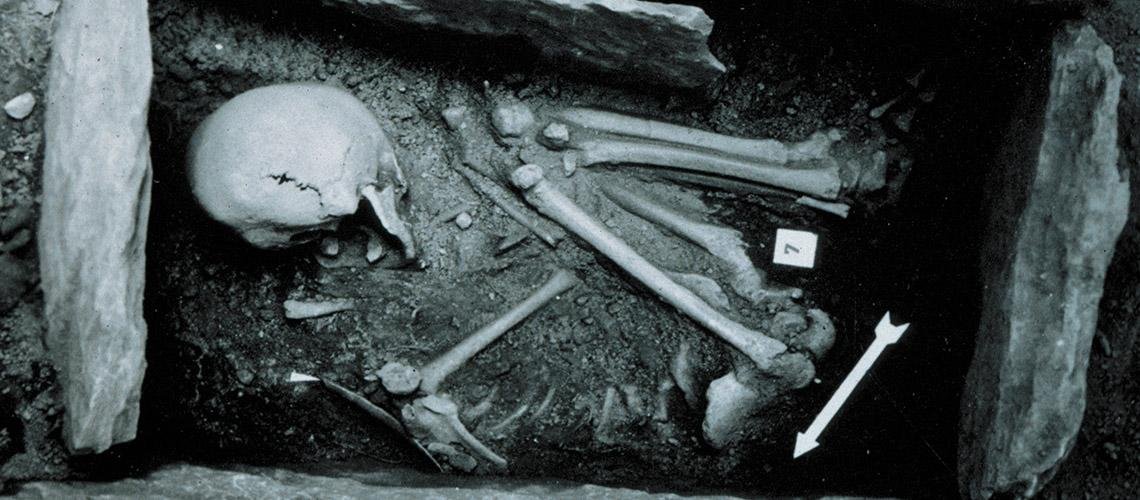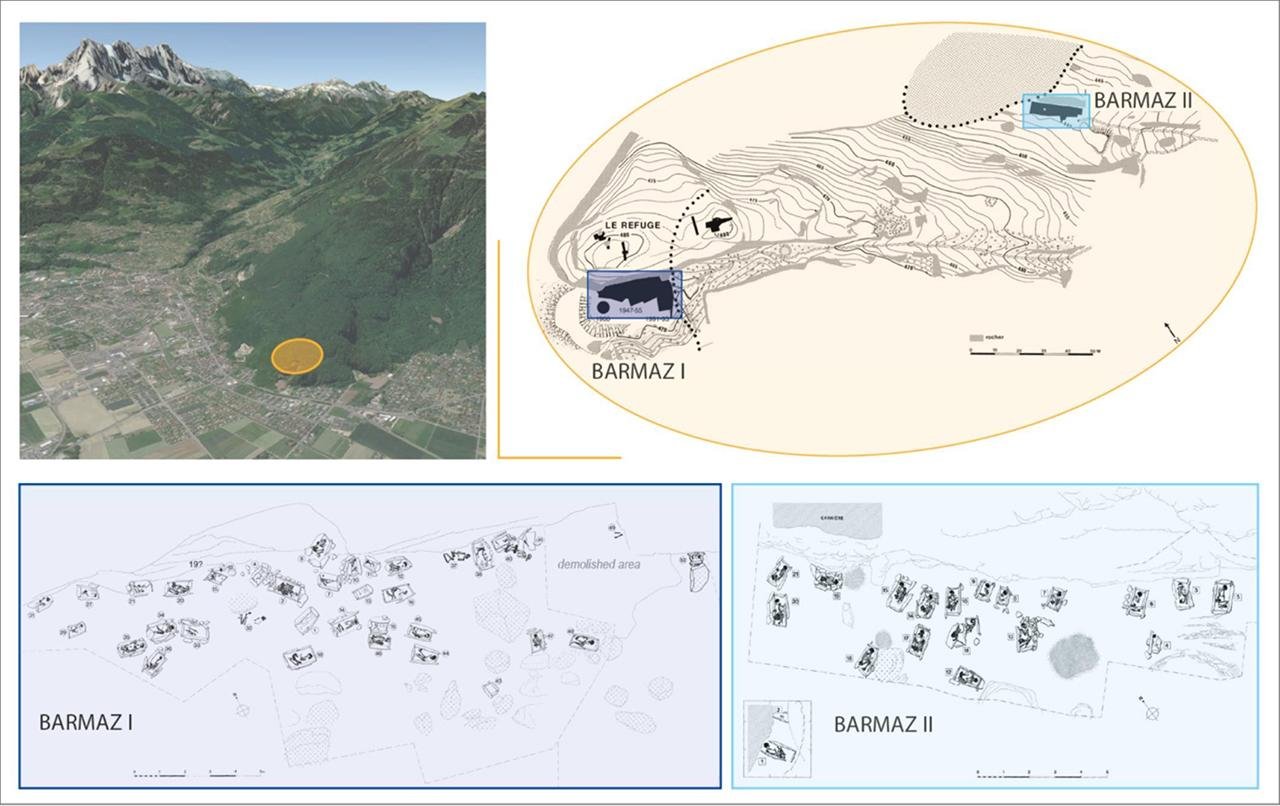
Archaeology
Archaeology is the study of human history and prehistory through the excavation and analysis of artefacts, structures, and other physical remains.
Archaeology is the study of human history and prehistory through the excavation and analysis of... View more
Isotope analysis reveals men and women had equal access to resources 6,000 years ago
-
Isotope analysis reveals men and women had equal access to resources 6,000 years ago
A study led by Déborah Rosselet-Christ from the University of Geneva, published in the Journal of Archaeological Science: Reports, analyzed human remains from the Barmaz necropolis. This Middle <a class="wpg-linkify wpg-tooltip" title="
Neolithic
The Neolithic era, also known as the New Stone Age, marks a significant turning point in human history. It was during this period, roughly 10,000 to 4,500 BCE, that our ancestors transitioned from a nomadic hunter-gatherer lifestyle to settled communities that practiced agriculture and animal domestication. The Neolithic revolution brought about profound changes in human society, paving the way for the birth of civilization as we know it today. Map of Southwest Asia showing the main archaeological sites of the” href=”https://archaeologymag.com/encyclopedia/neolithic/” target=”_blank”>Neolithic site, located in Collombey-Muraz, dates back to between 4500 and 3800 BCE.

Chamblandes tomb being excavated at the Barmaz site (Valais / Switzerland). Excavated by Marc-Rodolphe Sauter of the University of Geneva in the 1950s. Credit: University of Geneva The Barmaz necropolis comprises two burial sites, Barmaz I and II, containing the remains of approximately seventy individuals. These sites were excavated in the 1950s and 1990s, but it is only now, with advanced isotope geochemistry techniques, that researchers can glean detailed information about the lives of these early inhabitants.
Rosselet-Christ’s study utilized stable isotope ratios of carbon (δ13C), nitrogen (δ15N), and sulfur (δ34S) in bone collagen, as well as strontium isotopes (87Sr/86Sr) in dental enamel, to investigate the diet and origins of 49 individuals from the necropolises. These isotopic signatures provide critical information about an individual’s diet and the environment in which they grew up. Carbon and nitrogen isotopes, for example, can reveal the types of plants and animals consumed, while strontium isotopes indicate the geological region where a person spent their childhood.
The results of this analysis revealed a society with a diet heavily based on terrestrial resources, particularly animal protein. The high consumption of animal protein, likely from cattle, sheep, goats, and pigs, was consistent across both burial sites. However, a unique aspect emerged at Barmaz II, where individuals showed signs of consuming a nitrogen-15 enriched resource. This could be attributed to freshwater fish from nearby Lake Geneva and the Rhone River or possibly meat from unweaned young animals.

In orange, the location of the site of Barmaz, looking south. It is located on the plain, at the foot of the Chablais massif, which rises to an altitude of 2500 m. The site is divided into two contemporary burial areas named Barmaz I (dark blue) and Barmaz II (light blue) (Honegger and Desideri 2003, modified). Credit: Rosselet-Christ et al., Journal of Archaeological Science, Reports (2024) One of the most intriguing findings was the evidence of mobility among the individuals buried at Barmaz I. Strontium isotope analysis indicated that 14% of these individuals had spent their childhoods in different geological regions before moving to the area as adults. In contrast, all individuals from Barmaz II had strontium isotope values consistent with the local environment, suggesting they were native to the region.
This distinction between the two burial sites raises questions about the social structure and origins of the communities. Jocelyne Desideri, a senior lecturer at the Laboratory of Archaeology of Africa and Anthropology at UNIGE and co-author of the study, noted, “Our results show that people were on the move at that time. This comes as no surprise, as several studies have highlighted the same phenomenon in other places and at other times during the Neolithic period.”
Despite these differences in origin, the study found no evidence of dietary inequality. Both local and non-local individuals, regardless of gender, had equal access to food resources. This suggests a relatively egalitarian society, a finding that contrasts with some other Neolithic populations, such as those in southern France, where dietary differences between sexes have been observed.

Summary of human samples, tissue types and isotopes selected.
Credit: Rosselet-Christ et al., Journal of Archaeological Science, Reports (2024)Further analysis revealed potential social distinctions between the two burial sites. Individuals at Barmaz II, who showed higher levels of the nitrogen isotope, might have belonged to a socially distinct group engaged in specialized activities. This hypothesis is supported by paleopathological studies indicating a higher rate of injury among individuals buried at Barmaz II. However, the physical structure of the burials and the material buried with the dead did not differ significantly between the two sites.
This study not only provides the first isotopic data linking diet and mobility for the Neolithic of western Switzerland but also lays the groundwork for further research. Rosselet-Christ is continuing her work as part of her doctoral thesis, funded by the Swiss National Science Foundation’s ALP project. Her future research aims to include other sites in Valais and the Val d’Aosta in Italy, covering a wider Neolithic period and using additional isotopes, such as neodymium, to expand the understanding of these early societies.
More information: Rosselet-Christ, D., Goude, G., Besse, M., Honegger, M., Kottas, G., Gios, M., & Desideri, J. (2024). First Swiss alpine agropastoral societies: Contribution of isotope analysis to the study of their diet and mobility. Journal of Archaeological Science, Reports, 57(104585), 104585. doi:10.1016/j.jasrep.2024.104585
Sorry, there were no replies found.
Log in to reply.
